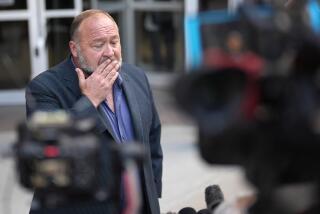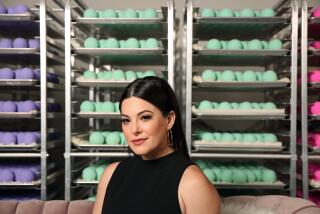DOW CORNING’S BANKRUPTCY FILING : Asbestos Firm Took the Same Path : Courts: Manville’s 1982 bankruptcy filing has become a model--for better or worse.
- Share via
DENVER — In its move Monday to seek bankruptcy protection over its silicone gel breast implants, Dow Corning Corp. is following in the footsteps of Manville Corp., the giant building products company targeted for billions of dollars’ worth of claims for asbestos-related illnesses more than a decade ago.
The flurry of claims to hit the Denver-based firm were so numerous, and the negotiations so complex, that Manville filed for Chapter 11 bankruptcy protection in 1982, throwing a solution for what was then the nation’s largest tort liability case into the lap of a New York federal Bankruptcy Court judge.
At the time, plaintiffs accused Manville of trying to dodge responsibility for a host of asbestos-related illnesses and deaths, many of which surfaced up to 40 years after exposure to the fine particles of the fireproofing material.
Manville officials said it was the only way to remain solvent, stay in business and be in a position to continue paying claims that could number 600,000 by the middle of the 21st Century.
Today, many plaintiffs feel they have been shortchanged, and while many will take whatever they can get, they believe the original wrong has been compounded. Initially, claimants received full payment, but as their number increased, terms of the settlements were modified and the best the victims can now expect is 10 cents on the dollar.
“I remember the day Manville filed, July 26, 1982, like the day John F. Kennedy was shot,” said the Los Angeles plaintiffs’ product liability lawyer, Roman M. Silberfeld. “I look at Dow Corning in much the same way: If the bankruptcy holds up, Dow Corning will lose the company, and the victims will lose a lot of time between now and the resolution of the bankruptcy.”
After six years of negotiations, Manville (which changed its name from Johns Manville Corp.) emerged from Bankruptcy Court with a plan to pay claims through a health trust, which now owns 80% of the company’s common stock and lays claim to 20% of its profit.
Under the plan, Manville is protected forever by an injunction that prohibits anyone from filing asbestos-related claims against it or its two subsidiaries. Instead, such claims must be filed against the Manville Personal Injury Settlement Trust, which includes a crucial provision covering people who may yet develop asbestos-related diseases.
Like those with existing claims, future victims will be required to seek compensation from the trust.
“The Manville bankruptcy is now a model for other companies,” said Sharon Sweet, vice president of corporate and industrial relations for Manville.
“It’s had its problems, to be sure,” Sweet said, “but the fact is, more claims will be paid, and the total sum of payments will be larger, as a result of this solution than of liquidation or anything else contemplated at the time.”
Los Angeles attorney Robert B. Steinberg, an adviser to the Manville trust who represents about 1,000 victims, agreed--up to a point.
“Manville is a model in the sense that a victims trust was created, which now owns the guts of the company that now operates for the benefit of the victims,” Steinberg said. “The problem is that there are lots of claimants and limited funds, so these victims can’t expect too much.”
Indeed, what started out as litigation involving 16,500 lawsuits seeking $12.5 billion had mushroomed beyond 170,000 claims by 1991, when the trust ran out of money. That led to a stay of all litigation against the company while the trust was reorganized.
Last December, U.S. District Judge Jack Weinstein of Brooklyn approved a second attempt to save the cash-strapped trust under which more than 100,000 claimants will initially get 10 cents on the dollar for asbestos-related ailments.
Weinstein said in a 222-page decision that the plan will ensure that all claimants are compensated to some degree by the company that has shed its asbestos-fiber operations to focus on fiberglass and forest products.
“Now we are all rooting for the new Manville,” Steinberg said. “The more money they make, the more money may go to the victims.”
The trust currently has $690 million with which to pay claims. Since February, when the company won release of the stays on claims payments, the trust has written 43,800 checks.
“Over 12,500 of those checks have cleared,” said Pat Houser, a spokeswoman for the trust. “That means those claims have been settled.”
Still, it’s only the beginning of a process that will take decades to resolve.
“Some people have died with claims pending,” said Deborah Hensler, a Rand Corp. expert on tort litigation. “To describe this as a process we should aspire to really makes a mockery of the whole justice system.”
Times staff writer Henry Weinstein in Los Angeles contributed to this report.
More to Read
Inside the business of entertainment
The Wide Shot brings you news, analysis and insights on everything from streaming wars to production — and what it all means for the future.
You may occasionally receive promotional content from the Los Angeles Times.











